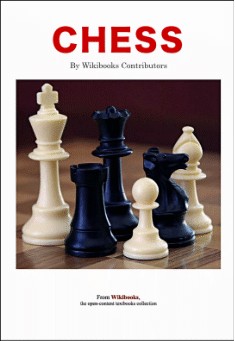Chess, unlike many other games, does not involve chance. It does not hinge on the roll of dice or which card is drawn. The outcome completely depends on the decisions of both the players. However, because of its vast complexity, the far-reaching consequences of some decisions are practically unforeseeable.
Chess is an ancient strategy game that originated in India. It is played by two individuals on a grid of 64 alternating black and white squares. The objective is to manoeuvre one's pieces so as to trap the opposing king in "checkmate". This hobby book will cover the basic pieces of chess, before going on to some more advanced topics.
The history of chess began in India during the Gupta Empire, where its early form in the 6th century CE was known as chaturanga, which translates as "four divisions of the military" – infantry, cavalry, elephants, and chariotry, represented by the pieces that would evolve into the modern pawn, knight, rook, and bishop, respectively.
Excerpt:
The king can move one square at a time in any direction, with certain restrictions.
The king is the most important piece belonging to each player, though not the most powerful. If a player moves a piece such that it threatens to capture his opponent's king, that king is said to be in check. If a player's king is in check, he must immediately remove the check by moving the king, blocking the check with another piece, or capturing the checking piece. As mentioned above, players may not place their own king in check; however, they may check their opponent's king. Two kings may never occupy adjacent squares, since they would have put themselves in check by moving there.
If the king is placed in check and cannot escape, it is said to have been checkmated (or "mated" for short). The first player to checkmate the opponent's king wins the game. Note that the king is never actually captured, since it is obliged to move out of check whenever possible (and the game ends when it is impossible).







